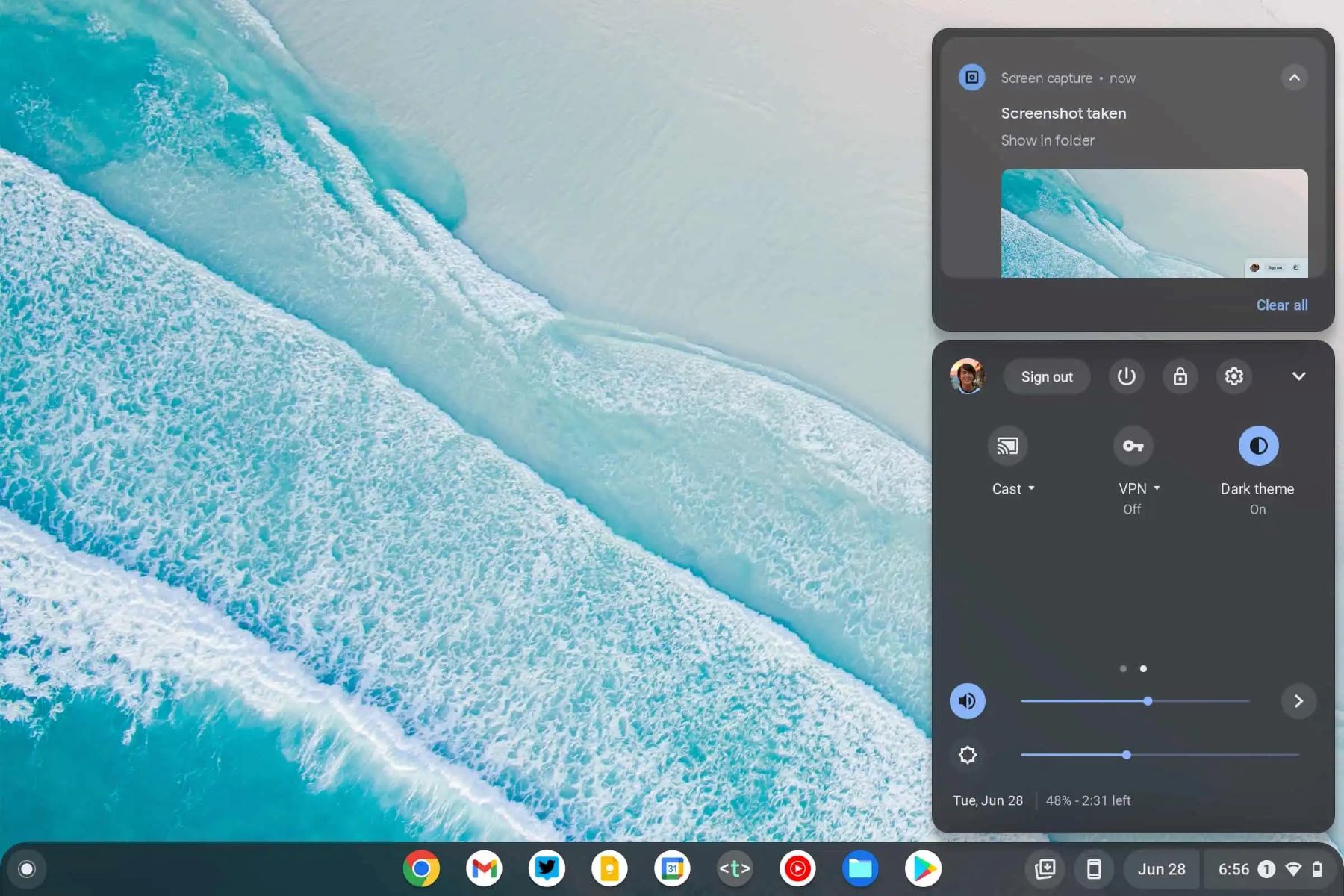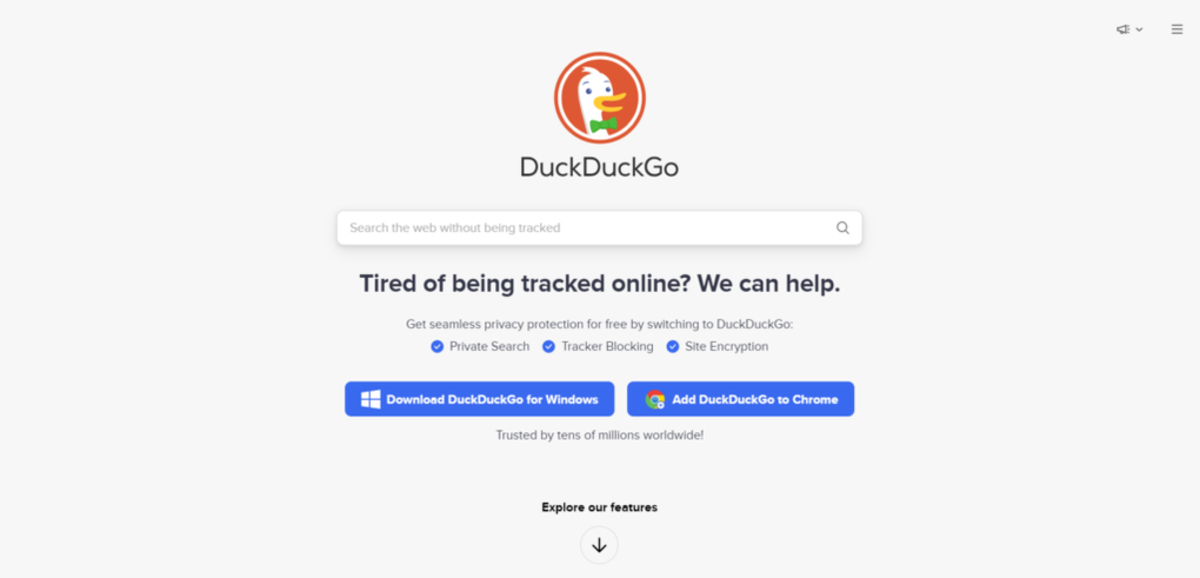Introduction
The Dark Web, a hidden and mysterious corner of the internet, has long held a fascination for many curious individuals. Far from the widely accessible and visible surface web, the Dark Web offers a level of anonymity and privacy that attracts users seeking alternative online experiences. However, it’s important to note that the Dark Web is not without its risks and potential dangers.
In this article, we will explore the world of the Dark Web, its benefits, risks, and provide you with a step-by-step guide on how to access it safely and responsibly. Whether you are purely curious or have specific reasons for venturing into the Dark Web, knowing the ins and outs will help you navigate this hidden realm more effectively.
Before delving into the details, it’s crucial to understand that the Dark Web is associated with illegal activities, including the buying and selling of drugs, weapons, and stolen data. While not all users engage in unlawful actions, it’s necessary to approach the Dark Web with caution and adhere to ethical guidelines.
By the end of this article, you will have a clearer understanding of how to access the Dark Web securely, protect your personal information, and navigate the hidden landscape responsibly.
Background on the Dark Web
The Dark Web refers to a part of the internet that is not indexed by search engines and is only accessible through specific software or configurations. It is a subset of the Deep Web, which includes any web content that is not indexed by search engines. While the Deep Web consists of legitimate platforms such as online banking portals or password-protected websites, the Dark Web is where anonymous and illicit activities typically take place.
The Dark Web operates on a network known as Tor, short for The Onion Router. Tor was originally developed by the United States Naval Research Laboratory to protect communication privacy. It accomplishes this by encrypting and routing internet traffic through a network of volunteer-operated servers, called nodes, resulting in a decentralized and obfuscated system.
One of the primary motivations for creating the Dark Web was to provide enhanced privacy and security for users, particularly journalists, activists, and individuals living in countries with strict internet censorship. By anonymizing both the sender and receiver of information, the Dark Web allows users to communicate and share content without fear of surveillance or retaliation.
However, the Dark Web has gained infamy due to its association with illegal activities. Underground marketplaces, known as darknet markets, provide a platform for exchanging illicit goods and services, including drugs, weapons, counterfeit documents, and stolen data. These marketplaces operate using cryptocurrencies like Bitcoin to ensure anonymity in financial transactions.
It’s important to note that not everything on the Dark Web is illegal. Whistleblowers, for example, may use the Dark Web to anonymously share sensitive information with journalists or law enforcement agencies. Moreover, there are legitimate websites and forums that discuss topics such as privacy, cybersecurity, and digital rights.
Understanding the background of the Dark Web is crucial before venturing into its depths. Awareness of its purpose, both legal and illegal, will help you navigate through the complexities and potential risks associated with accessing the Dark Web.
Benefits and Risks of Accessing the Dark Web
Accessing the Dark Web offers both benefits and risks that users should consider before venturing into this hidden realm. Understanding these pros and cons will help you make an informed decision about whether or not to explore this enigmatic part of the internet.
Benefits:
- Anonymity and Privacy: One of the primary advantages of the Dark Web is the ability to maintain anonymity and privacy. By utilizing encryption and routing through multiple nodes, Tor provides a high level of security, making it difficult for anyone to trace your online activities.
- Access to Censored Information: In countries with strict internet censorship, the Dark Web can serve as a gateway to unrestricted information. Journalists, activists, and individuals living under oppressive regimes can use the Dark Web to bypass censorship and freely share and access information.
- Whistleblowing: Whistleblowers looking to expose wrongdoing or share sensitive information can use the Dark Web to remain anonymous while communicating with journalists or appropriate authorities. This can be a valuable tool in fighting corruption and promoting transparency.
- Alternative Marketplaces: While there are illicit marketplaces on the Dark Web, there are also legal alternatives. For example, individuals living in regions where certain goods or services are restricted may turn to the Dark Web to access them. This includes purchasing legal products anonymously or overcoming geographical or political barriers.
Risks:
- Illegal Activities: The Dark Web is widely associated with illegal activities, including the buying and selling of drugs, weapons, and stolen data. Engaging in or supporting illegal activities on the Dark Web can have serious legal consequences.
- Scams and Fraud: Due to the anonymous nature of the Dark Web, there is an increased risk of scams and fraud. Users must exercise caution and conduct thorough research before engaging in any transactions or disclosing personal information.
- Malware and Hacking: The Dark Web is notorious for hosting malicious software and hacking forums. Users who are not cautious may unwittingly download malware or become victims of hacking attempts.
- Encountering Disturbing Content: The Dark Web is home to disturbing and illegal content, including child exploitation material and graphic violence. It’s important to approach the Dark Web with caution and understand that you may stumble upon content that is both illegal and deeply disturbing.
Before accessing the Dark Web, carefully weigh the potential benefits against the risks involved. Ensure that you are aware of the legal implications, take necessary security precautions, and approach any transactions or interactions with caution.
Step-by-Step Guide to Accessing the Dark Web
Accessing the Dark Web requires specific software and configurations to ensure anonymity and security. Follow this step-by-step guide to safely navigate and explore the Dark Web.
-
- Ensure Anonymity: Using a VPN and Tor Browser
Before accessing the Dark Web, it’s recommended to use a Virtual Private Network (VPN) to mask your IP address and encrypt your internet connection. A VPN adds an extra layer of security and ensures your online activities remain private. Additionally, it’s essential to use the Tor Browser, which is specifically designed for accessing the Dark Web.
-
- Downloading the Tor Browser
Navigate to the official Tor Project website (https://www.torproject.org) and download the correct version of the Tor Browser for your operating system. The Tor Browser is available for Windows, Mac, Linux, and Android.
-
- Connecting to the Tor Network
Install the Tor Browser and launch the application. The Tor Browser connects to the Tor network, which routes your internet traffic through a series of encrypted nodes. This process creates a layered and anonymous connection.
-
- Understanding Onion Websites
Onion websites on the Dark Web have addresses ending in .onion instead of the usual .com or .org. They are designed to be accessed exclusively through the Tor Browser. It’s important to note that not all onion websites are illegal, and there are legitimate platforms and forums as well.
-
- Navigating the Dark Web Safely
When exploring the Dark Web, exercise caution and avoid clicking on suspicious links or downloading unknown files. Stick to reputable websites and forums and be aware of the potential dangers and risks associated with illegal activities.
-
- Security Precautions: Protecting Personal Information
When accessing the Dark Web, it’s crucial to protect your personal information. Avoid using your real name, email address, or any personally identifiable information. Create anonymous usernames and use secure passwords for any accounts you create.
-
- Avoiding Illegal Activities and Scams
Engaging in illegal activities or conducting transactions involving illegal goods and services on the Dark Web can lead to severe legal consequences. Be aware of scams and frauds and thoroughly research any darknet markets or vendors before making any transactions.
-
- Recommended Dark Web Websites
While we discourage engaging in illegal activities, there are legitimate websites and forums on the Dark Web that promote privacy, cybersecurity, and digital rights. These include platforms dedicated to whistleblowing, secure communication, and privacy advocacy.
By following this step-by-step guide and exercising caution, you can access the Dark Web securely and explore this hidden part of the internet responsibly.
Ensure Anonymity: Using a VPN and Tor Browser
When accessing the Dark Web, ensuring anonymity is of utmost importance. By using a combination of a Virtual Private Network (VPN) and the Tor Browser, you can significantly enhance your online privacy and security.
What is a VPN?
A Virtual Private Network (VPN) is a service that protects your internet connection by encrypting your data and routing it through a remote server. This process masks your IP address and makes it appear as if you are browsing from a different location. VPNs also provide an additional layer of security by encrypting your internet traffic, keeping your online activities private from prying eyes.
How does a VPN work with the Tor Browser?
Using a VPN in conjunction with the Tor Browser adds an extra layer of security and anonymity. When you connect to a VPN server before launching the Tor Browser, your internet traffic is encrypted and sent through the VPN server, making it even more difficult for anyone to trace your online activities.
Choosing a reliable VPN service:
When selecting a VPN service, it’s important to choose a reputable and reliable provider. Look for VPNs that have a strict no-logs policy, meaning they do not store any information about your online activities. Additionally, ensure that the VPN service has a wide network of servers in various locations to offer you more options for server locations.
Using the Tor Browser:
The Tor Browser is the most commonly used software for accessing the Dark Web. It is based on the Tor network, which is a decentralized network of servers that protect your privacy by routing your internet traffic through multiple nodes.
How to use the Tor Browser:
- Download the Tor Browser from the official Tor Project website.
- Install the Tor Browser on your device.
- Launch the Tor Browser and wait for it to establish a connection to the Tor network.
- Once connected, the Tor Browser will open, and you can start browsing the Dark Web.
Benefits of using a VPN and the Tor Browser:
- Enhanced Anonymity: By using a combination of a VPN and the Tor Browser, you can achieve a higher level of online anonymity and privacy.
- Added Security: The encryption provided by the VPN and the multi-layered routing of the Tor network offer additional security measures to protect your data and online activities.
- Access to Censored Content: Using a VPN can help bypass censorship imposed by your internet service provider or government, while the Tor Browser enables access to websites and content that may be blocked or restricted.
By utilizing a VPN and the Tor Browser, you can ensure a higher level of anonymity and security when accessing the Dark Web. Remember to choose a reliable VPN service, follow the recommended security practices, and exercise caution while exploring this hidden part of the internet.
Downloading the Tor Browser
Downloading and installing the Tor Browser is the first step towards accessing the Dark Web securely. The Tor Browser is specifically designed to provide anonymity and privacy while browsing the internet and accessing onion websites.
1. Visit the official Tor Project website:
To download the Tor Browser, go to the official Tor Project website. It is essential to ensure that you download the Tor Browser from the legitimate source, as there are potential risks associated with downloading from unofficial or malicious websites.
2. Choose the correct version:
On the Tor Project website, you will find different versions of the Tor Browser for various operating systems, including Windows, Mac, Linux, and Android. Choose the version that corresponds to your device’s operating system to ensure compatibility and optimal performance.
3. Download the Tor Browser:
Click on the download link for the appropriate version of the Tor Browser. The download should start automatically, but you may be prompted to save the file or choose a destination for the download. Select a location on your device where you will easily find the downloaded file.
4. Install the Tor Browser:
Once the download is complete, locate the downloaded file and initiate the installation process. Follow the on-screen instructions to install the Tor Browser on your device. The installation process is straightforward and generally similar to installing any other software.
5. Customize your Tor Browser settings:
After the installation is complete, you will have the option to customize certain settings in the Tor Browser. It is generally recommended to leave the default settings as they are, as they are specifically configured for optimal privacy and security.
6. Launch the Tor Browser:
Once the Tor Browser is installed, launch the application. The Tor Browser will automatically connect to the Tor network, establishing a secure and encrypted connection.
7. Check your Tor Browser’s security level:
The Tor Browser provides different security levels, ranging from high to standard. By selecting a higher security level, you can enhance your privacy and further minimize the risks associated with browsing the Dark Web. To change the security level, click on the shield icon located in the Tor Browser toolbar.
8. Start browsing:
With the Tor Browser successfully installed and connected to the Tor network, you are now ready to start browsing the Dark Web. Type onion website addresses ending in .onion into the Tor Browser’s address bar to access hidden websites on the Dark Web.
By following these steps, you can easily download and install the Tor Browser to begin exploring the Dark Web. Remember to keep your Tor Browser updated to ensure you have the latest security patches and features.
Connecting to the Tor Network
Connecting to the Tor network is a crucial step in accessing the Dark Web securely. The Tor network routes your internet traffic through a series of encrypted nodes, providing anonymity and privacy. Follow these steps to connect to the Tor network using the Tor Browser:
1. Launch the Tor Browser:
After successfully downloading and installing the Tor Browser, launch the application on your device. The Tor Browser will automatically start establishing a connection to the Tor network.
2. Wait for the connection:
Once the Tor Browser is launched, it may take a few moments to connect to the Tor network. During this process, various nodes are selected, and encryption keys are exchanged to ensure a secure connection.
3. Confirm the connection:
Once the Tor Browser has established a connection to the Tor network, a confirmation message or a green icon in the Tor Browser toolbar will indicate a successful connection. This signifies that your internet traffic is being routed through the Tor network.
4. Access .onion websites:
With the Tor network connection established, you can now browse and access websites with .onion addresses, which are exclusive to the Dark Web. Simply enter the .onion URL in the Tor Browser’s address bar, and the browser will retrieve the requested website from the Dark Web.
5. Understand the Tor network limitations:
It’s essential to be aware of the limitations of the Tor network. The Tor network may slow down your internet connection due to the multi-layered encryption and routing. Additionally, some websites or services on the Dark Web may be slower to load or have limited functionality compared to surface web counterparts.
6. Maintain browser privacy settings:
When using the Tor Browser, it’s crucial to maintain and respect the privacy settings. The Tor Browser is automatically configured to provide a certain level of privacy and security. Avoid installing additional browser extensions or plugins that could potentially compromise your anonymity or privacy.
7. Regularly update the Tor Browser:
To stay protected from potential security vulnerabilities, it’s important to keep your Tor Browser up to date. The developers of the Tor Browser regularly release updates that contain security patches and improvements. Configure the Tor Browser to check for updates automatically or periodically visit the official Tor Project website to download the latest version.
By following these steps, you can connect to the Tor network using the Tor Browser and start exploring the Dark Web with enhanced privacy and anonymity. Remember to exercise caution, adhere to ethical guidelines, and use the Tor network responsibly.
Understanding Onion Websites
When accessing the Dark Web, you will encounter websites with addresses that end in “.onion”. These unique URLs are specific to the Dark Web and cannot be accessed through regular web browsers. Understanding how onion websites function will help you navigate the Dark Web more effectively and safely.
What are onion websites?
Onion websites are websites that are only accessible through the Tor network. The “.onion” extension signifies that the website is hosted on the Dark Web and relies on the Tor network’s encryption and anonymity features to protect user identities.
How do onion websites work?
Onion websites operate differently from regular websites on the surface web. Instead of relying on traditional domain name system (DNS) servers, onion websites use cryptographic keys and hashes to generate their URLs and establish connections within the Tor network.
Characteristics of onion websites:
- Complex URLs: Onion website URLs consist of a series of random characters followed by the “.onion” extension. These URLs are not easy to remember or search for and generally require users to find them through other sources, such as darknet forums or directories.
- Anonymity and encryption: Onion websites are designed to provide a high level of anonymity and encryption for both the website owners and the visitors. By routing traffic through multiple nodes in the Tor network, onion websites ensure that the user’s original IP address is hidden, making it difficult to trace their online activities.
- The specific physical locations of onion websites are intentionally concealed. This further enhances the anonymity and protects the identity of the servers hosting the websites.
How to access onion websites:
To access onion websites, you will need to use the Tor Browser. Simply enter the onion website’s address (URL) into the Tor Browser’s address bar, and the browser will automatically connect to the Tor network and retrieve the requested website from the Dark Web.
Important considerations when accessing onion websites:
- Be cautious: The Dark Web is known for hosting illegal content and illicit activities. Exercise caution and do thorough research before visiting any specific onion websites.
- Verify reputability: Not all onion websites are illegal or harmful, but it’s important to verify the reputability of any websites you visit. Look for trusted sources, read reviews or recommendations from other users, and be skeptical of unverified claims.
- Understand the content limitations: Due to the anonymous nature of the Dark Web, accessing certain types of content, such as reputable news sources or mainstream social media platforms, may be more challenging. The majority of the Dark Web comprises forums, marketplaces, and specialized communities catered to specific interests.
By understanding the nature of onion websites and using the Tor Browser for access, you can explore the Dark Web in a more informed and responsible manner. Remember to exercise caution and adhere to ethical guidelines while interacting with onion websites.
Navigating the Dark Web Safely
Exploring the Dark Web requires a cautious and responsible approach to ensure your safety and protect your online security. While the Dark Web presents unique opportunities for anonymity, it is important to understand the potential risks and take appropriate precautions. Here are some tips for navigating the Dark Web safely:
1. Exercise caution:
Exercise caution when browsing the Dark Web, especially when accessing unfamiliar websites or interacting with unknown individuals. Be skeptical of claims that seem too good to be true and avoid websites that appear suspicious or untrustworthy.
2. Stick to reputable sources:
Stick to reputable sources when searching for information or engaging in discussions on the Dark Web. Look for forums or communities that have a positive reputation and trustworthy contributors. This can help you avoid misinformation or fraudulent activities.
3. Beware of phishing attempts:
Beware of phishing attempts that may try to trick you into revealing sensitive information. Phishing emails, messages, or links that appear to be from legitimate sources can lead to data breaches or identity theft. Be diligent in verifying the authenticity of any requests for personal or financial information.
4. Use common sense:
Use common sense and trust your instincts when navigating the Dark Web. If something seems suspicious or too risky, it’s better to err on the side of caution and avoid it altogether. Remember that your safety should always be your top priority.
5. Keep your device secure:
Ensure that your device and software are up to date with the latest security patches. Use reputable antivirus or anti-malware software to protect against potential threats that may exist on the Dark Web. Regularly scan your system for any malicious software or vulnerabilities.
6. Avoid downloading unknown files:
Avoid downloading files from unknown sources while browsing the Dark Web. Malware, viruses, or other harmful software can be disguised as innocuous files. Only download files from reputable sources that you trust.
7. Encrypt your communications:
If you need to communicate with others on the Dark Web, consider using encrypted communication methods. Encrypted messaging apps or email services can help ensure that your conversations remain private and secure.
8. Stay updated on security practices:
Stay informed about the latest security practices and developments related to the Dark Web. Regularly educate yourself about new threats, scams, or vulnerabilities that may arise. This will help you adapt your browsing habits and maintain a safer online experience.
By following these safety guidelines and maintaining vigilance while navigating the Dark Web, you can reduce the risks associated with accessing this hidden part of the internet.
Security Precautions: Protecting Personal Information
When venturing into the Dark Web, it is crucial to take adequate security precautions to protect your personal information and maintain your privacy. The inherently anonymous and decentralized nature of the Dark Web poses unique risks that require careful consideration. Here are some essential security precautions to keep in mind:
1. Limit sharing personal information:
Avoid sharing unnecessary personal information on the Dark Web. Minimize the use of your real name, address, phone number, or any other personally identifiable information. Adopt a pseudonym or anonymous username to help protect your identity.
2. Use strong and unique passwords:
Create strong, unique passwords for the accounts you use on the Dark Web. Use a combination of uppercase and lowercase letters, numbers, and special characters. Avoid reusing passwords across different accounts to minimize the impact of a potential breach.
3. Enable two-factor authentication (2FA):
Where possible, enable two-factor authentication for your Dark Web accounts. This adds an extra layer of security by requiring a second form of authentication, such as a unique code sent to your mobile device, in addition to your password.
4. Keep your software updated:
Regularly update your operating system, web browser, antivirus software, and other applications to ensure they have the latest security patches. Outdated software can present vulnerabilities that can be exploited by malicious actors.
5. Be cautious of links and downloads:
Exercise caution when clicking on links or downloading files from the Dark Web. Links and downloads can be disguised as something innocuous but contain malware, viruses, or other malicious software. Only click on trusted links and download files from reputable sources.
6. Use caution with cryptocurrency transactions:
If you engage in cryptocurrency transactions on the Dark Web, take precautions to protect your privacy. Consider using temporary cryptocurrency addresses and mixers or tumblers to enhance anonymity. Stay updated on the latest practices for securely transacting with cryptocurrencies.
7. Regularly backup your data:
Ensure that you regularly backup your important data from devices that access the Dark Web. This will help protect your information in case of malware infections, device failures, or other unforeseen events.
8. Stay vigilant and trust your instincts:
Stay vigilant while browsing the Dark Web and trust your instincts. If something seems suspicious or too good to be true, it probably is. Avoid engaging in or supporting illicit activities, as they can have severe legal and ethical consequences.
By adhering to these security precautions and maintaining a cautious approach, you can better protect your personal information and mitigate the risks associated with exploring the Dark Web.
Avoiding Illegal Activities and Scams
When navigating the Dark Web, it is crucial to be aware of the potential risks associated with engaging in illegal activities and falling victim to scams. As the Dark Web is known for its association with illicit content and underground marketplaces, it’s important to understand how to protect yourself and avoid getting involved in illegal activities or becoming a victim of scams.
1. Know the laws:
Before accessing the Dark Web, familiarize yourself with the laws pertaining to your jurisdiction. Understand what activities are legal and illegal in your country to ensure you do not inadvertently engage in illegal actions while exploring the Dark Web.
2. Avoid participating in illegal marketplaces:
Engaging in or supporting the purchase or sale of illegal goods, such as drugs, weapons, counterfeit items, or stolen data, is not only ethically wrong but also could lead to serious legal consequences. Refrain from using illegal marketplaces on the Dark Web.
3. Use reputable and trusted sources:
When seeking information or services on the Dark Web, make sure to use reputable and trusted sources. Research and verify the legitimacy of the websites or platforms before engaging with them. Seek recommendations from reliable sources, such as trusted online communities or forums dedicated to privacy and security.
4. Be cautious of phishing and scams:
Exercise caution with unsolicited messages, emails, or links on the Dark Web. Scammers may attempt to deceive you into revealing personal information or financial details. Beware of phishing attempts and be skeptical of any offers that seem too good to be true.
5. Verify vendors and user reviews:
If you choose to engage in legal transactions on the Dark Web, such as purchasing products or services, be cautious and carry out thorough research. Verify the reputation of vendors through user reviews or feedback. Look for reputable forums or communities where users share their experiences and recommendations.
6. Exercise discretion with personal information:
Avoid disclosing unnecessary personal information to strangers on the Dark Web. Be cautious when providing any personal details, even in seemingly innocent conversations or interactions. Protect your identity and only share information with trusted individuals or platforms.
7. Stay educated about current scams:
Stay informed about the latest scams, hacking techniques, and deceptive practices prevalent on the Dark Web. Regularly update yourself about common tactics used by scammers and cybercriminals. This will help you recognize and avoid potential risks.
8. Report illegal activities:
If you come across illegal activities or believe you have encountered a scam on the Dark Web, consider reporting it to the appropriate authorities. Providing information can assist in combating illicit activities and protecting others from falling victim to scams.
By taking these precautions and being mindful of the potential risks, you can navigate the Dark Web more responsibly and avoid involvement in illegal activities or becoming a victim of scams.
Recommended Dark Web Websites
While caution is necessary when exploring the Dark Web, it’s worth noting that not all websites on the Dark Web are associated with illegal activities. There are legitimate websites that serve various purposes, including privacy advocacy, cybersecurity, and anonymous communication. Here are some recommended Dark Web websites that you may find useful:
1. ProPublica: ProPublica is an investigative journalism organization that delves into important issues such as corruption, government accountability, and corporate malpractice. They often publish stories based on information provided by whistleblowers seeking to expose misconduct.
2. The Intercept: The Intercept is a news publication with a focus on exposing surveillance, privacy violations, and government overreach. They frequently report on topics related to digital rights, cybersecurity, and whistleblowing.
3. Hidden Wiki: The Hidden Wiki is a community-edited directory that lists various types of websites and services available on the Dark Web. It serves as a starting point for Dark Web exploration, providing links to different categories of websites, including forums, marketplaces, and whistleblower platforms.
4. Tor Project: The official website of the Tor Project is a valuable resource for information about the Tor network and the Tor Browser. It provides updates, news, and download links for the Tor Browser, ensuring that you have the latest version and security patches.
5. SecureDrop: SecureDrop is a secure platform designed to facilitate anonymous communication between whistleblowers and journalists. It allows individuals to submit sensitive information securely while protecting their identity. Several news organizations, including The New York Times and The Guardian, use SecureDrop to receive tips and leaks.
6. DuckDuckGo: DuckDuckGo is a privacy-focused search engine that does not track or store user data. It can be accessed on the Dark Web and offers an alternative to mainstream search engines that collect personal information and track user behavior.
7. Riseup: Riseup is an organization that provides secure and private communication tools, including email accounts, mailing lists, and instant messaging services. It is focused on supporting activism, independent media, and social justice movements.
8. The Guardian Project: The Guardian Project is an initiative that develops and maintains various open-source mobile applications focused on privacy and security. Their apps, such as Orbot and Orfox, are designed to enhance anonymity and secure communications on mobile devices.
Remember, even with these recommended websites, exercise caution and verify their reputability before engaging with them. The Dark Web carries risks, and it’s important to stay informed and vigilant while navigating this hidden part of the internet.
Conclusion
The Dark Web is a fascinating and mysterious realm of the internet that offers both benefits and risks for those who choose to explore it. While it provides anonymity, privacy, and access to censored information, it is important to approach the Dark Web with caution and adhere to ethical guidelines.
In this article, we discussed the background of the Dark Web and its association with both legal and illegal activities. We explored the benefits of accessing the Dark Web, such as enhanced anonymity and alternative marketplaces, as well as the inherent risks, including illegal activities, scams, and disturbing content.
We provided a step-by-step guide on how to access the Dark Web securely, emphasizing the use of a VPN and the Tor Browser. We also highlighted the importance of understanding onion websites and navigating the Dark Web safely.
Throughout the article, we emphasized the need for security precautions and protecting personal information. We addressed the importance of avoiding illegal activities and scams, recommending that individuals stay informed, exercise caution, and trust their instincts.
Lastly, we provided a list of recommended Dark Web websites, showcasing platforms and resources dedicated to privacy, journalism, whistleblowing, and secure communication.
As you venture into the Dark Web, it is vital to remember that the Dark Web carries risks. It is essential to stay vigilant, respect the law, and prioritize your privacy and security. Take advantage of the anonymity and freedom the Dark Web provides, but always approach it responsibly and with discretion.
By being aware of the potential risks, following recommended security practices, and using the Dark Web responsibly, you can navigate this hidden part of the internet more safely and effectively.

























